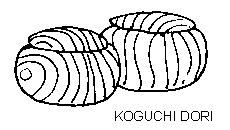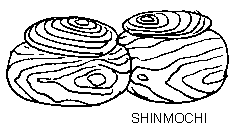Wood, Shell and Stone - Stuart DowseyGo BowlsGo stones are best kept in sturdy containers as protection against loss or breakage. A far wider range of materials has been tried than for other go equipment. Plastic, glass, heavy felt, leather and ceramic bowls have all been produced, but wood remains the standard material. Japanese wooden bowls are turned on a lathe from solid blocks. The best quality examples are made by hand with such a high quality finish that polishing becomes unnecessary. For the wider market, bowls are mass produced on fully automated lathes.The cheaper bowls are usually of Japanese chestnut. Other woods with attractive grain include Cherry, Chinese Quince, Ebony and Mahogany. The prince amongst woods is Mulberry with its regular grain and honey colouring. The finest Mulberry grows on Miyakejima and Mikurajima, two islands in the Izu Seven Islands chain which stretches out from Tokyo Bay into the Pacific Ocean. The price range we are considering is from £15 to £150 per pair.   The grain contributes to the quality. Finer quality grain is termed 'Koguchi dori' with regularly spaced smoothly curving patterns. The cheaper variety as exemplified by chestnut belongs to the 'Shinmochi' type and has irregular patterns of contrasting lines and circles. The most imaginative bowls are hard to come by. They are made in China in Yunnan Province, the home of the best quality Chinese go equipment. Although of conventional shape with high lipped lids, these bowls are entirely hand-woven from bleached cane. Perhaps we will see such bowls in Britain in the future so that you too can enjoy their unique appeal. from the British Go Journal - No.53 (June 1981) |
go boards | go stones | go home | weed's home page